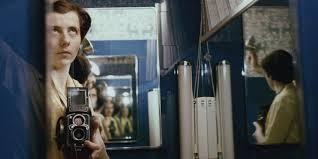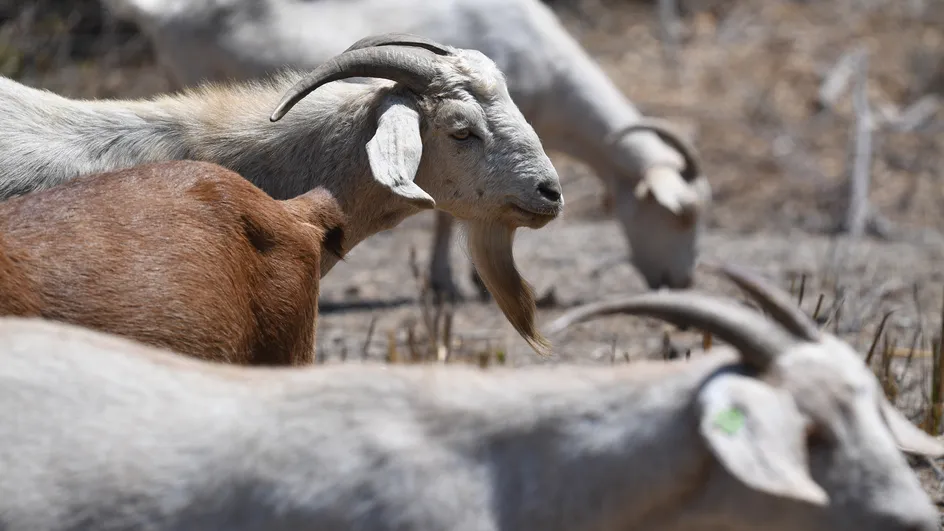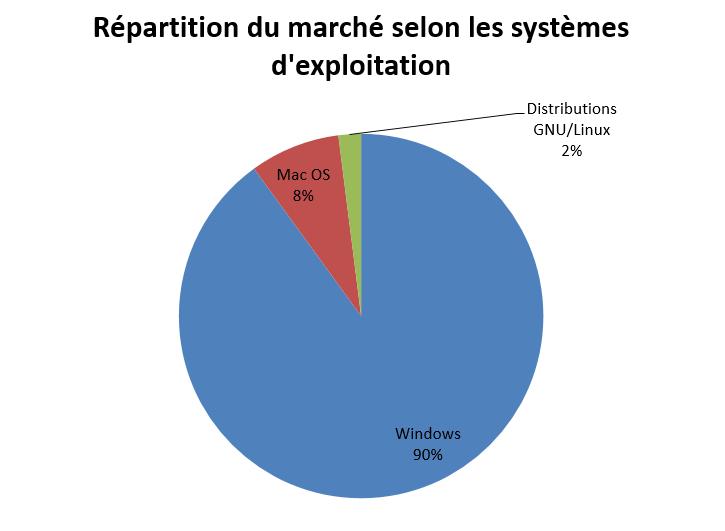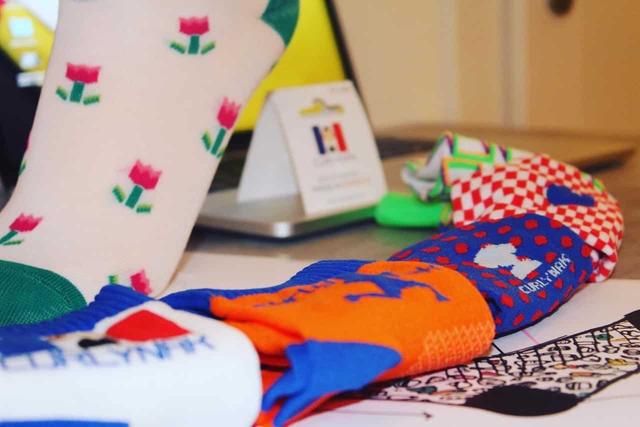Vivian Maier, Mary Poppins at the Rolleiflex or a Christmas story for the photo!
Listen
Fate sometimes takes strange forms. Or is this god walking around, having fun playing tricks? Was it he who inspired this young real estate agent who loved local history: John Maloof. “I have a knack for spotting something even from afar! he will say later.
But in this case, he only had to cross the street, from the apartment he lives in in Chicago, to enter this auction room! It was there that one day in 2007 he began to rummage through the shelves, looking for old photos, illustrations, postcards from another era. He thought that box of anonymous negatives, paid for less than 400 dollars, could serve him well. He was working on writing and illustrating a book about the neighborhood….
- John Maloof
After a quick first appraisal, he was disappointed! Did his flair deceive him? No view of Portage Park, the object of his study… As for this photographer, whose compositions he still admires, a quick search on the net brings nothing: A perfect anonymous. He therefore forgets his purchase in a closet. A year later, he digitizes them and starts selling them on ebay. An art teacher, intrigued by the quality of the photos, contacts him…..
John Maloof's interest begins to sharpen. Apart from the name, he knows nothing of this mysterious photographer whose impressed self-portraits he saw on film 30 or 40 years earlier: A tall, strange-looking, lanky woman with a deep gaze, with a barrette stuck in her hair, but whose image begins to haunt him.
“She wore baggy clothes… A worker in the Soviet Union in the 1950s… Walking like an automaton, with her camera around her neck! Those who knew her would say later. But for now, John only has a two-line summary story, which was provided to him at the auction house: An old lady who was dying and would not be disturbed. This lot that he bought is part of the box that she was renting, but that she was no longer paying for, and that we therefore began to liquidate.
These are quality negatives. From 6-6. A square format of very good definition, which makes him think of dealing with a professional. A journalist perhaps? Cross-searching on Google still turns up nothing. This Vivian Maier is unknown to the battalion of any elite! It does not appear in any section, even the most obscure, those which fan out on the Internet to underline the activity of anyone who has had the slightest bit of talk about them, activist within an association, having had any responsibilities.
He has found a quest, a mission. He forgets "Portage park". He wants to find the scattered puzzle pieces, reconstruct the background image... A story that will take him across the Atlantic. But for the moment he is far from suspecting such a sequel. He contacts the auction house to find the buyers of the other lots. He buys them back and acquires a total of more than 100,000 negatives, films, hundreds of reels never developed. Almost the entire bottom: A small part remaining in the possession of a collector. A huge building site stands before him. He launches into the compulsive stripping of thousands of images, scans the negatives, carefully develops some of the hundreds of negatives made decades earlier, still locked in their cylindrical box.
- Vivian Maier-3 photos
Extraordinary photos come out of the bin, that no one has ever seen!…Strangers, d children, old people, the marginalized, women with sparkling eyes, taken at random from the streets, with a rare sensitivity and sense of framing. It's a kaleidoscope of the streets of Chicago, spanning from the 50s to the 80s.
The pleasure of the Egyptologist who enters an inviolate tomb must be of the same caliber! You have to be a bit familiar with the lab to understand the pleasure of seeing the contours of the image emerge, in the bath of developer, and the jubilation that John was able to feel when unearthing shots that no one had seen, even its author. . He becomes more and more aware of being at the head of an invaluable treasure, and will invest himself body and soul, improving his gaze, calibrating it on the masterpieces he views. He will go to ask for help, but will not be encouraged by the establishment. When he proposed the images to the greatest institutions – the MoMA in New York, the Tate Modern in London, all of them refused, trying to justify the inexplicable: “The museums believe that a print that has not been validated by living of the artist has no value!
Among other lessons, John discovers that the art world is a pre-square, where you have to have your card, a pedigree, be introduced. Who can justify such blindness, or rather such a refusal?...Has he kicked open a door which was forbidden to him, over which one watches as on a private hunting ground?...Would this world be filled with left unsaid and sacrificed? Is art just a market like any other, where any new value introduced will cause the price of other actions to fall?
Stubborn, the young man creates a blog to spread the pictures of the unknown, post them on social networks where hundreds of glowing comments burst from all over the world. This is proof that photography is a universal language, especially when it comes to street photography! True amateurs have the advantage of being sincere and spontaneous, and not subservient to the interests of chapels and clans.
What we call "street art", requires qualities of opportunism, immediacy, and empathy with the subject. It's a mix that isn't easy to get or to provoke… Many professional photographers will later say their admiration for Vivian Maier: “A very good eye, a sense of light, of humour… She had everything!” They will compare her to the very great Rembrandts and Caravaggios of photography: Doisneau, Willy Ronis, Diane Arbus.
John Maloof is selling fragments of negatives. Some fetch him up to $80 on eBay. Financing himself with these sales, he organized a first exhibition at the Chicago cultural center. It's a triumph, the beginning of a success that will continue to grow! The media seizes the affair. She is on the cover of TV channels, Vogue magazine... All the international press is on the spot! Vivian Maier becomes "The Famous Unknown", an encounter between art and a thriller. Who is really behind "The Nanny's Secret"?
The nanny's secret?....Among specialists, who don't like UFOs, and any new, unplanned, unlisted form of life, this story will put this little world made up of cliques, and of shared references, uncomfortable! They still don't know what to do with the Vivian Maier case. Fans will gloat, happy to see that in this standardized world, such incredible stories can still happen.

In a pretty village in the French Alps, the echoes of this strange affair will soon reverberate between the mountains. And the elders will remember that Maria Jaussaud, a local girl who left for the United States at the beginning of the twentieth century, returned with her 6-year-old daughter Vivian in the 1930s, before they both resumed their journey. of America six years later. But we will see Vivian again, taller, inseparable from her cameras.
In April 2009, Google finally gave John a clue. He learns from an obituary published a few days earlier in the Chicago Tribune that Vivian Maier died at the age of 83.
“Vivian Maier, a proud French-born resident of Chicago for the past fifty years, died peacefully on Monday. Second mother of John, Lane and Matthew. This free spirit brought a touch of magic to their lives and those of all who knew her. Always ready to give advice, advice or lend a helping hand. Film critic and extraordinary photographer. A truly unique person, who will be sorely missed and whose long and wonderful life we will always remember. »
A first remark about a misunderstanding: Vivian Maier although having a French filiation, is very American. A mistake that many articles about him still repeat. To their credit, many employers and friends of Vivian, like the Gensburg brothers, authors of this obituary, and who ensured her old age, also thought that she was an emigrant. Not to mention the many comings and goings, the voids and the uncertainties that dominate several years of his biography.
It says a lot about the character she had created for herself, or that others projected onto her, in this culture of secrecy and silence. Vivian was not very verbose about her origins, her story, even if many describe her as sympathetic, warm, funny, inventive, alert. Obviously, a lot of things from her past were painful enough for her to keep him at bay. She cultivated strange neuroses, others will say whims, which will worsen over time:. He was someone who couldn't part with any business. She kept everything, obsessively: Newspapers, bills, hats, old shoes, clothes, the most diverse and unusual objects. A total of 200 boxes stored in this storage unit, with in the middle, its treasures of negatives, and its cameras, sleeping in a pyramid-like silence…..
This story, just as much as the photos, turned John Maloof's life upside down, made him drift in directions he did not suspect, and even gave meaning to his life. : “I want to put Vivian Maier in the history books”…..
With Charlie Siskel he made a documentary called “In Search of Vivian Maier” Trailer: http://bit.ly/1lNAFZM
It gave a real success, made of esteem and respect, all in modesty, carried out by people who we feel troubled by their responsibility and their mission! Certainly, this heritage could have fallen into worse hands than into those of this passionate and determined young man! Did God want to catch up? This report makes Vivian more visible to us, through those who knew her, the families who employed her, and other rare friends who knew her.
"It seems crazy to be someone's friend for ten years, and know nothing about her" This warm woman tells us about her, who approached her through the children that Vivian kept, in the sixties...
Follow many faces, children she took care of, most often keeping fond memories of them, giving picturesque, striking anecdotes. Sometimes a dark side emerges, agreeing to reveal a complex personality, that no photo product can fix!
So many moving testimonies, terribly human, tinged with emotion and regret, that of not having understood this strange woman, whose genius we did not suspect. This documentary goes beyond its subject, telling us about lost opportunities, regret, guilt, the difficulty of communication, transmission and the place that a loved one can continue to occupy in the hearts of others, beyond death. It also questions us around our responsibility, and our right, as well as our duty to manage the affairs, to see the secrets of a missing person.
This interview "Photographer Vivian Maier, between mystery and overexposure" given to Télérama by Charlie Siskel provides a better understanding of the subject of the film, its ambitions, and its limits.
http://bit.ly/1Z6yNJr
It is deliberately not exhaustive on the life of Vivian, not being able to treat everything, focusing above all on her American life, as a deliberately selective framing. Nothing will be known of these six years spent in France, in the company of her mother, where she was educated between the ages of six and twelve, before returning to the United States. Vivian will return a few years later, to Saint Julien de Champsaur, to settle the inheritance of an aunt who made her her legatee. She will nevertheless keep a correspondence with certain inhabitants, and it is a letter addressed to the photographer of the village in the early 1960s that will delight John Maloof, confirming him in the intuition that he had that this great artist would have appreciated being exhibited.
In this letter, Vivian proposes to this friend to continue working for her despite the distance: “I made stacks of photos! when I say batteries, I really mean batteries, and I think they're really not bad. But he refuses, not feeling able to take on such a workload alone.
We understand that Vivian was not always this poor shadow, which we see gradually closing in on itself, over the years, like the diaphragm of a camera, to later resemble one of those desocialized subjects that she liked to photograph.
Abigail Solomon Godeau says of her: "All that can be said is that, in a mysterious and poignant way, Maier lived his adult existence through the lens of a camera, vicarious existence in which the "eye" of the device and the "I" of the subject are inextricably linked. There is, to my knowledge, no other similar example in the history of photography. What needs to be emphasized here is that, like photojournalism, street photography is a field largely reserved for men. There are many reasons for this: the scrutinizing gaze, a male prerogative, the gendered character of public space, the relative vulnerability of women within this space, and the risks posed by photographing recalcitrant subjects. (from “The Invention of Vivian Maier”)
While the last years she lived necessarily provoked a lot of regrets, on all sides, about a recognition that would have been very useful to her, on all levels, this letter shows that Vivian, who was aware of her talent, wanted his work to be exhibited.
Why wasn't it?
“She had everything! She would have been successful! If she had exhibited, she would have become famous! Said Ellen Mark, a great photographer viewing, admiringly, the prints.
But aren't we trying to reassure ourselves by asking this question? How to believe that she did nothing to burst the glass ceiling? Would it have been enough for her to declare "Look how awesome I am!", so that we hasten around her? Personally, I have more than one doubt about this thesis of the artist who deliberately sought to remain in the shadows. Many artists who have eaten "rabid meat" will agree. Excellence does not necessarily lead to consecration, or even recognition... Examples are legion. Moreover Vivian left with a serious handicap: She didn't know anyone, and her social condition, even if it was honourable, was not made to help her. It's a bit hypocritical to think that she didn't do anything to "break through" when you know the unspoken things about this caste society. Because following this missive, addressed to a French photographer, and which was politely refused, it is logical to think that she took the same step in Chicago. And perhaps the order of the attempts should be reversed? Because it is logical to think that she first tried on the spot, for obvious reasons of follow-up, shipments and costs.
I imagine him, in Chicago, in the 60s, pushing the door of a photo agency. Maybe going through one of those turnstiles you see in “Citizen Kane”? This is a film that she must have particularly liked, because of the dizzying shots, and this curious looping narration revolving around an intimate mystery. Vivian was a very cultured person, very curious, a great reader, sometimes taking the kids to the cinema to see arthouse films.
In his documentary, was John Maloof also inspired by Orson Wells to tell us about Vivian Maier? Wells resorted to the intertwined accounts of witnesses who knew "Kane", who all had a very particular perception of the character, to enlighten him differently. A revolutionary narrative process, which Henrich Böll will also take up in a book that was famous in the 1970s, and even gave rise to a film: "Group portrait with lady". http://bit.ly/1mafIaT. Note that this title would have been marvelously with John Maloof's documentary.
Scenario: When she enters this gallery, with her "book" I see her flanked by a kid or two. She hurried through town with them as usual, stopping every now and then to snap a street shot. They circled the store for a while. She hesitated again and again. She's careful, doesn't want to get in her head with this story! His camera is both his amulet and his shield! It is with him that she keeps things and people at an ideal distance, incorporating them in her own way, giving them grace and mystery. The photographer is a learned tamer of reality. Each photo is for her a therapy, which obeys both risk-taking and a need to protect herself. War photographers often explain that without their camera, they would not have the courage to advance!
We ask her what she wants. She explains herself quickly, awkwardly, and opens her file, presents her black and white prints. She developed them as best she could, in her bathroom! “I have others! she said, more than you might imagine! Are you interested? »
No doubt the employee finds the photos interesting. It is an indisputable thing. He's still in the business! But it is true that the value of things is relative, and remains conditioned by a whole host of non-objective and unconscious factors. Even if this woman is a white woman! A black woman in this country would have even less dared to take the step. He looks at her, from top to bottom, goes back to the photos, goes through them again, asks her if it was really her who made them.
Irritated, she shows him her Rolleiflex, which is much better than a card
of visitation, or a medal, when he lies on his chest. The Rolleiflex is the Rolls Royce of film photography!
A device that is worth a crazy price! This woman is truly atypical!
He does not know what to say, what to think, dances from one foot to the other. Maybe he ends up calling his boss? This one arrives, in a hurry, takes a look at this big, slightly braque rave, looking, as one witness said, "of a Soviet worker" dressed in the fashion of the thirties, and provided with a funny accent.
Vivian once again tells her unlikely story, which does not really fit into the frames, and those picture rails hanging on the walls that museums and exhibition halls love so much; even when all trace of life is absent! But a good recognized signature amply compensates for the void and misleads the benets. He asks her about her job. "Housekeeper..." she said. Maybe he thinks he's dealing with Mary Poppins too. Reality is constantly colored by our dreams. He looks at the children, his nose glued to a window.
She explains her approach as an artist. The man shakes his head embarrassed, says "Sorry we're not interested!.... Look elsewhere maybe!" Give him back his folder full of photos, a little scattered now. One of them may slip and fall at the foot of the desk. She leaves, dragging the kids after her, already eager to take more photos, urgently and compulsively!
Perhaps she did not insist, after two or three refusals, less obstinate and less young than John Maalof. It's not her style to sell herself, she's too proud for that!
And then, before the 1970s, photography was not yet considered a major art. It is the journalists who take the street photos, who buy expensive cameras. Apart from that, families are sometimes arranged in rows of onions for events.
We haven’t yet invented Arles photography meetings! The great photographers are acclaimed, no doubt, but only make up a tribe of unusual Indians, who recognize each other, thanks to their black and white feathers. Some legends from photo-journalism, like that of Robert Capa, take up the whole landscape. Lartigue, at 60, is beginning to emerge. For what mysterious reason did these reactionaries not start using color and continue to favor duotones? That wouldn't happen nowadays. We would no longer throw Vincent Van Gogh out of the village grocery store, refusing to let him pay for a camembert from one of these paintings! .. Let's stop seeing cursed artists everywhere! We are no longer in the nineteenth century. There is no longer a glass ceiling above people. They are free on a land with a slightly veiled sky, it is true. Not terrible for the light when taking pictures!
It’s still a shame that the photographer from Saint Julien de Champsaur did not respond favorably. We might not be there!... But it's easy to repeat the story when we know the end. All the same, we are left with a taste of the unfinished in the mouth... Like this unfortunate story of Vincent, and his last painting, with the crows hovering over a field of bel. The dead leaves are picked up with the shovel, and the photo negatives too!
We may try to console ourselves with her treasures, consider that she would have been happy to be consecrated, even posthumously, but we would have liked to make a Christmas story out of it, and bring this Mary Poppins, his camera instead of the umbrella, in a Charles Dickensian story, and invite him to the feast table with us!…
All this remains speculative, open to dreams, and fantasies! If Hollywood buys the script, maybe they'll embellish the story? Will they make it a success story?...
Let's redo our scenario, "in the style of the Coen brothers": This time the director of an agency will discover the photo that fell from Vivian's book, while he is closing the shop in the evening... Finally, he has a nice face, square glasses, looks like two drops of water to John Maloof. He calls his employee back, and demands an explanation! Why did he throw such a genius out on the street. The man is embarrassed, tries to explain himself: “You know, it was only a nanny! With two kids, who put their fingers everywhere! And dressed anyhow! I didn't mean to bother you! »
From then on, our agency director, a man a la "Frank Capra", never stopped trying to catch up, a contract in hand. He will find the unknown at the Roleifflex before the end of the reel, while the spectators have tears in their eyes.
I don't think they'll get married, though! Let's stop the melody. In any case, he will offer him a golden bridge to have the exclusivity of his shots. But Vivian doesn't need anything... She's somewhere else, she's laughing, she's making fun. She has everything, that is to say a Rolleiflex, and the look to go with it. Or maybe as much born out of practice. We only ever become what we do!.....Yes, okay, but John Maloof, you will say to me, what does he become in there? You can't make two Christmas tales with a single story!… You have to choose where the hand of God goes.
But the life and work of Vivian Maier are not separate. They have become universal by the representation, the emotion, the regrets that the story inspires, the beauty and the mystery contained, which resists all analysis, and makes you pull the edges with an emotion of force 8.
What was her youth in the Alps?.. What did she do with the money from her inheritance?… Do we have the right to publish the posthumous work of an artist without her consent? ?... Where does this talent as a photographer come from? … Had someone familiarized her with the photo….
To learn more, in pursuit of Vivian Maier, cross other sources, read for example this excellent article from Vanity Fair. http://bit.ly/1ITfbo5. This journalist, Marion Festraët, must also have fallen in love with her subject to write so well, to be so colorful. But it is probably the minimum when talking about a photographer of such talent, not to betray the negative in the print:
Excerpts: “For two years, she cycled through the valley. "We said she had gas! jokes Rosette. Sure enough to swallow the mountain roads on his fixed-gear bicycle. When she returned to the United States, she bought her first Rolleiflex and left to visit Canada with the fruit of the inheritance. "Every time she had money, she took trips," remarks Françoise Perron. When she travels, always alone, sometimes under assumed names - one more mystery - Vivian picks landscapes and especially people on the fly: a vaporous silhouette leaving for the ball in Florida, Indian children having fun with old tires in Canada, black kids in San Francisco, sailors in Cochin, the rump of a horse taunting the sphinx of Luxor, turbaned men in Yemen...”
That's the point of a good story, a good photo, of communicating that kind of joyful, unfulfilled excitement that takes us out of the frame, and helps us live, changes the quality of our gaze, and plunges us into an infinity of possibilities. And we go on a journey in pursuit of a shadow, which will never be caught up, in its race towards the sun. And it is quite surprising to note that this story of equation with an unknown, contains more mystery and humanity, than that of the destinies of adventurers who are said to be "out of the ordinary"!
Black and white, light and contrasts, John Maloof has now understood everything in photography, by not wanting to be exhaustive, by blowing his breath a little on the lens, in order to suggest the blur, the vaporous, the emotion, transcendence. The 1001 photos of Vivian are offered to us!
You can get into the frame, try to uncover its real secrets, those of the shot, also get into the picture, wait for the magic moment when you can whisper "rosebud", this magic moment when the shutter closes on the mystery…..
http://bit.ly/1JcgR7d The Hidden World of Vivian Maier
http://bit.ly/1ZeGEov In Champsaur, the memory of photographer Vivian Maier
http://bit.ly/1Qv9nE4 The 20 most beautiful photos of Vivian Maier - VirusPhoto ...







